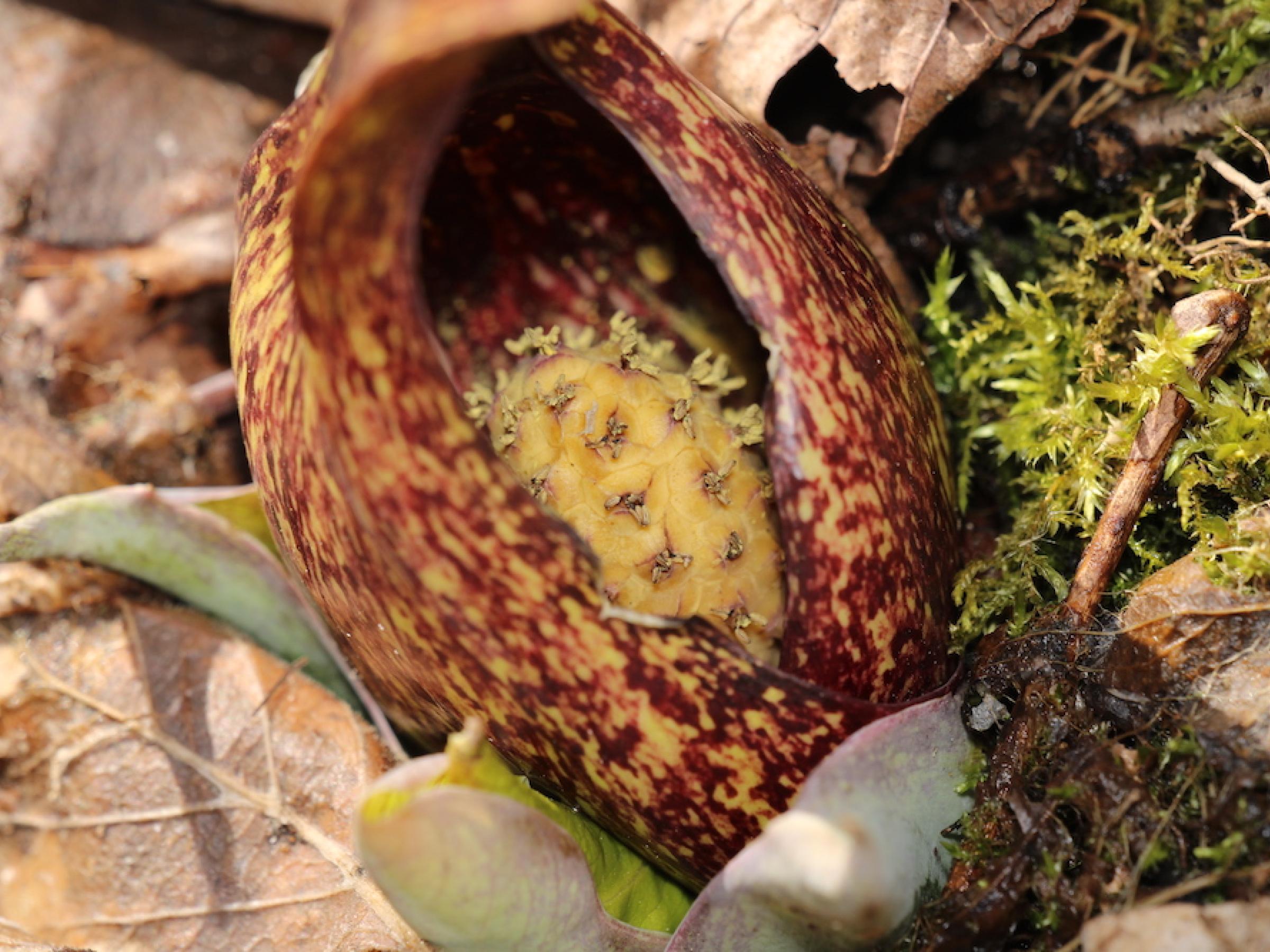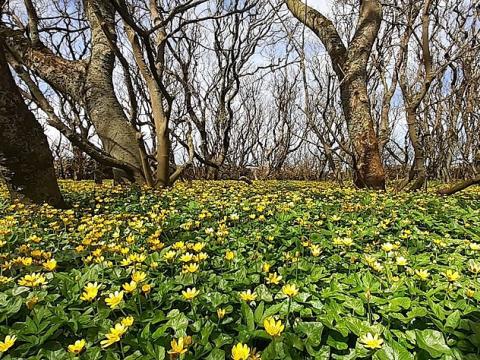Happy Spring Equinox! With the advent of spring, many flowers will begin to bloom in the coming weeks. But one species has the jump on the bloom game, its flowers are already fully in bloom.
That plant is the eastern skunk cabbage, which gets its name from the sulfurous odor that it emits. You may not want to sniff this flower. Its odor has been described as “nauseous,” “skunky,” and of “putrid meat,” but some people find the odor reminiscent of “garlic,” “fresh cabbage,” and “mustard.” So your mileage may vary on whether the flower smells unpleasant.
But its odor is not the only thing that sets skunk cabbage apart from other plants in the area. It’s one of Michigan’s first plants to bloom in the new year. The flowers are most common in early March, but some individuals already start to open their flowers as early as January. The flowers pictured here were starting to open in late February.
Because it blooms so early in the year, skunk cabbage sometimes has to deal with snow and ice, but it’s well equipped to do so! The flower emits heat to melt any snow and ice that might prevent it from emerging from the soil. It can maintain its flower temperature between 70 and 77 degrees F (21 and 25 degrees C), which can be up to 95 degrees F (35 degrees C) above the winter air temperature.
The flowering structure (called an inflorescence) is the only part of the plant that is initially above ground. Later in the spring and summer, the plant will shoot out large, green leaves that resemble cabbage and the flowers will fade. The leafy vegetation only briefly co-occurs with the flowers.
The inflorescence (pictured here) has two main parts. The first is the reddish-purple and yellow hood, called the spathe, which encloses a bulb-like spadix, where the plant’s numerous, tiny, and petalless flowers bloom from. This flower structure is common to all plants in its family (the Arum family), which includes popular tropical house plants – like peace lilies and pothos – as well as the giant corpse flower. Other Michigan-native arums include wild calla, jack-in-the-pulpit, and arrow arum.
You can find skunk cabbage throughout Michigan’s upper and lower peninsulas in swamps, bogs, and forest with wet, muddy soil. It is plentiful on MBGNA grounds – those looking for it can find it along the Fleming Creek trails, the floodplain forest boardwalk of the great lakes garden, and at the Arboretum, where it is abundant along the Huron river. Visit soon to see this unique flower, and let us know what you think it smells like!
Derek Smith tells stories about science and the natural world for a wide audience. He has written for institutions, blogs, and in magazines as a freelancer, intern, and volunteer. His writing has been featured in the ScienceBites blogs and the Matthaei Botanical Gardens and Nichols Arboretum newsletter.





